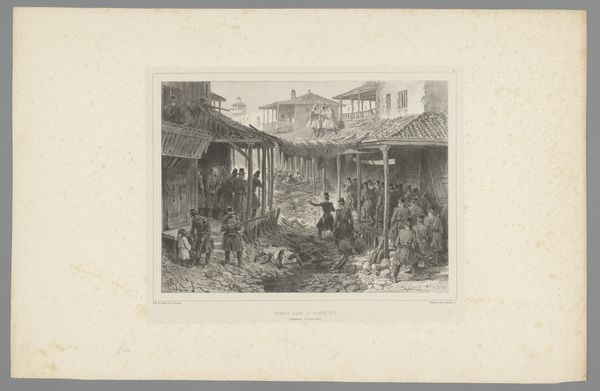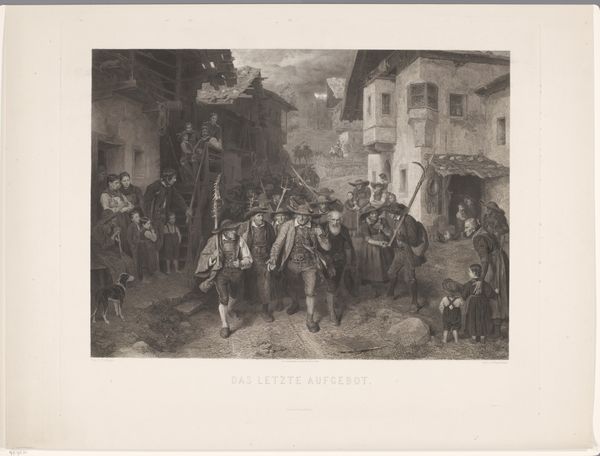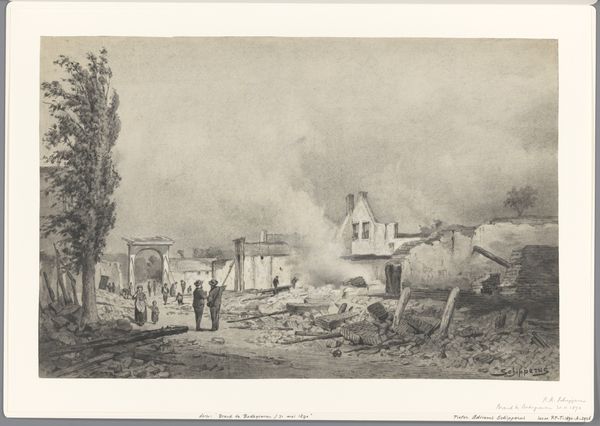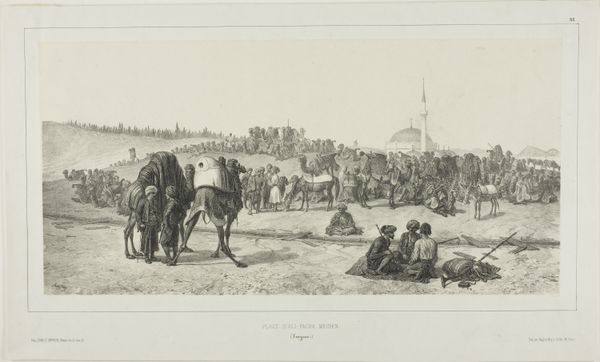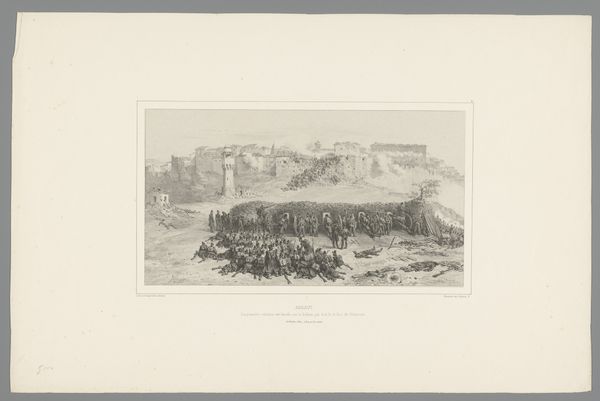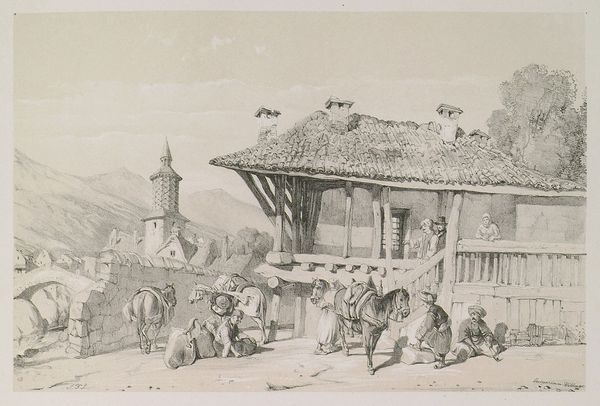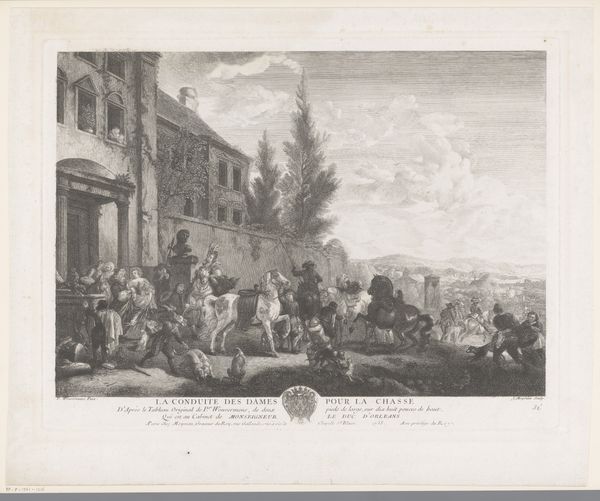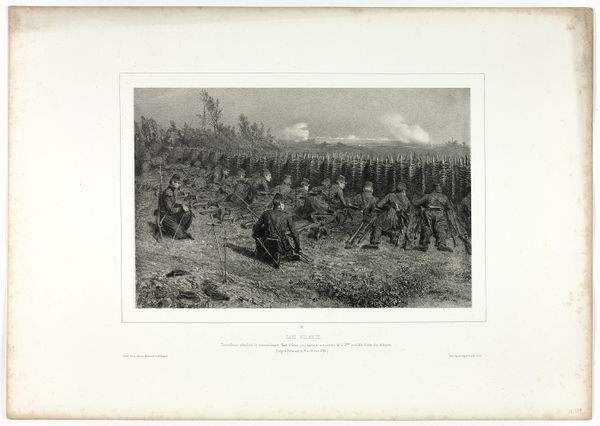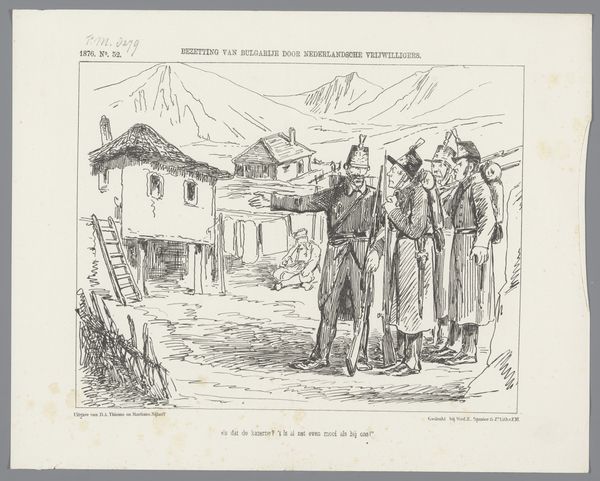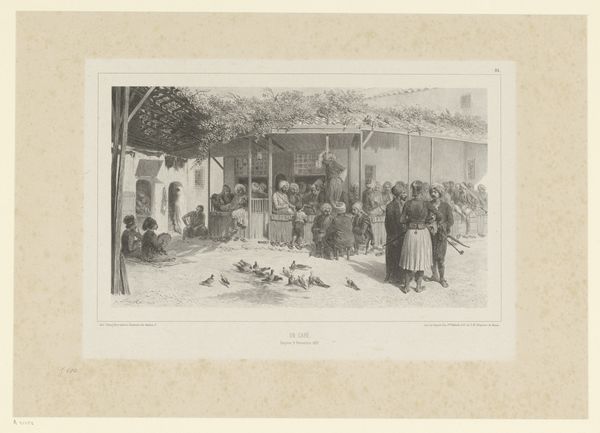
The Main Street of Baghtcheh-Saraï, Crimea, August 19, 1837 1841
0:00
0:00
drawing, lithograph, print, paper
#
drawing
#
lithograph
# print
#
paper
#
romanticism
#
cityscape
#
genre-painting
#
history-painting
#
realism
Dimensions: 232.5 × 327 mm (image); 235 × 330 mm (primary support); 339 × 456 mm (secondary support)
Copyright: Public Domain
Curator: This is Auguste Raffet’s "The Main Street of Baghtcheh-Saraï, Crimea, August 19, 1837," a lithograph on paper, completed in 1841. Editor: Right away, I get a strong sense of daily life just unfolding, a snapshot in time. The light seems to emphasize that dusty, almost dreamlike atmosphere. Curator: Absolutely. Raffet’s technical skill is evident in how he captures the textures and tonal variations, using the lithographic process to emulate the nuances of a detailed drawing. Consider, for example, how the stark contrast effectively establishes depth, structuring the visual plane. Editor: And look how Raffet juxtaposes stillness and motion. The figures clustered to the left are contemplative, static, versus the bustling caravan in the middle, which pulls the eye and creates dynamism. Curator: Indeed. Raffet, known for his detailed depictions of military life and historical events, imbues even this everyday street scene with a certain gravitas. We see elements of Romanticism merging with the burgeoning Realist movement through an emphasis on observed detail. Editor: I'm really drawn to those figures perched on what looks like a crumbling wall. They appear somewhat detached, like spectators. Makes me wonder about their stories, their relationships to everything happening. You almost get the impression the artist made himself part of the scene too. Curator: It also prompts us to contemplate how Europe, during this epoch, saw itself vis-à-vis other cultures—especially areas absorbed by imperial interest, doesn't it? Baghtcheh-Saraï was located within a contested border zone. So, while presented as a mere ‘street view’, the very act of its creation encodes multiple layers of complex power relations. Editor: Thinking about it now, that slightly elevated vantage point of the image is probably also contributing to the feel that the town almost spills outwards. You're seeing life in layers; nothing is hidden from your viewpoint. What a powerful use of something that is ostensibly straightforward. Curator: I concur that there’s a quiet but commanding intelligence to how the artist assembles it all—history, culture, topography, affect—through purely formal elements and arrangement of shapes. Editor: Well, Raffet certainly made 19th-century Crimea come alive. It is an image that feels relevant beyond just being a relic of the past.
Comments
No comments
Be the first to comment and join the conversation on the ultimate creative platform.
